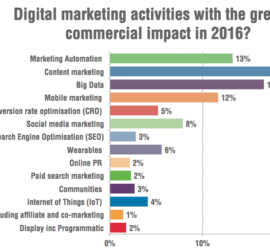 Contact us
Contact us The Ideal CRM System For Non-profit Organizations
Although the products from Salesforce are primarily seen as tools for simpler, more transparent and more efficient generation of profit in various business areas, they are globally used also by non-profit organizations. Thus fulfilling the philanthropic idea of the founders of the Salesforce Foundation, to improve the lives of communities around the world.
1-1-1 Model
As early as in 1999, since Salesforce.org was founded by Marc Benioff (CEO of Salesforce) as Benioff’s Promise, it stands on three pillars, which are referred to as the 1-1-1 Model.
Its name consists of 1% justice, 1% Salesforce products, and 1% of the time of its employees that are dedicated to helping others.
By fulfilling this idea, the Salesforce Foundation began in 2008 with the provision of its services and technology to non-profit organizations.
These can still use the two products that have been specifically designed for the needs of non-profit organizations, with the first 10 user licenses of Salesforce provided free. If the organization needs more than 10 accesses, it may receive a discount for the additional ones from the foundation, which can be as high as 80%.

Why is CRM appropriate for non-profit organizations?
One of the most common and most popular products of Salesforce is the Sales Cloud, which we have written in our blog. Its purpose is (logically) to promote the sales department and provide it with suggestions and relevant information the department needs for the effective co-operation of its team members and to make profits.
Why do then non-profit organizations need a similar CRM system?
Like any other classical business, also non-profit organizations work with lots of data, not only inside, but especially in relation to external communication. Since everything is connected with everything and in practice you cannot work indefinitely with extensive Excel spreadsheets, Salesforce is the ideal platform on which (also) a non-profit organization can create its own system.
This then helps to coordinate not only activities but also the relationship with the contacts on donors, supporters, volunteers, and internal staff.
Since Salesforce is not an application but a platform, it allows users perfect adjustment, thanks to the interconnection with the existing system. Salesforce, therefore, should be seen mainly as a toolbox with which a non-profit organization will build their own “application” – a system that will work.
The platform, which it is necessary to understand fully
Salesforce is a sophisticated and for the new users, and often difficult system, as evidenced by actual experience and user reviews.
We explained that Salesforce is primarily a platform that every organization needs to “build up” in its own way. In connection with this fact, it is necessary to count on a minimum initial training – it is recommended to choose one person who will have the closest contact with the system and will function as an admin.
The implementation of the system requires expert help, which discourages many organizations. Salesforce has but an “army” of partners around the world, many of which address right the needs of non-profit organizations.
Non-profit organizations can choose from 2 packages – The Non-profit Starter Pack (NPSP) or the Enterprise edition. The Starter pack is more popular since it is designed for organizations of various sizes and it works on a number of pre-defined functionalities, making its implementation easier.
The NPSP helps organizations to manage contacts, collect information about donations, as well as on the donors, on grants, etc., and also monitors the development of relations between contacts, donor contributions, and volunteers, which makes it easier to map also recurring donations. The introductory documentation serves to all, who would be interested, to help better understand the Start Pack functions.
NPSP is the basic package and is a suitable choice for non-profit organizations, which:
- are smaller and operated through a simple fundraising system,
- often deal with various currencies,
- have a smaller volume of data,
- already have one of Salesforce products implemented and only need a simple fundraising application to complement it,
- look for a simple way of managing people.
In addition to the packages, which are for non-profit organizations free of charge, the classical Salesforce products are often used too (for NPO, they are available with substantial discounts).
Appirio, one of the US Salesforce partners, mentions the case study on the use of the Analytics Cloud by the “Year Up” non-profit organization, which deals with the practical training of young adults with low incomes within internship programs.
They used it to create easy-to-use dashboards that provide them with access to information on the effectiveness of all activities. The program collects a number of data that it evaluates – in this case, the employees of the non-profit organization can keep track of the ways they manage to influence the earnings of their “clients” as well as which of their programs is the most successful.
It is also possible to evaluate, which student groups belong to the riskiest, based on their demographic data. With the help of Salesforce, “Year Up” is able to improve the functioning of the program and refer more easily on its importance to the donors and supporters of the organization.
A network of communities and “help of the coders” from the GitHub
The use of Salesforce products is associated with the possibility of building a globally active network of communities and volunteers, who are interested in the idea functioning the best way possible. Not only Salesforce but also the users themselves create “web marketplaces”, where you can share ideas or just draw something from them.
On the one hand, there are free webinars, which you can find directions on the Salesforce website and which will help you to navigate within the system, but great help is e.g. also publishing the programming codes on the GitHub network.
You can become members of the community also through the Google groups, last but not least, significant help is also the exchange of views and advice among Salesforce users.
To help navigation in the world of Salesforce tools, also the „non-profit translator”, which reformulates each area in the language used by non-profit organizations, can help the employees of NGOs.
The main benefits of Salesforce as a CRM for non-profit organizations
- Flexibility – Salesforce is a platform, not an application – therefore, each user can customize the interface features and the followed metrics to fit his/her needs. For non-profit organizations, it can be a simplified record of donors, volunteer activities or expenditure tracking. In addition, Salesforce for non-profit organizations enables the simplified use of the system, with the help of point-and-click tools.
- The availability of applications in the Salesforce AppExchange – AppExchange is a place, where every user can find applications with pre-set functions. Non-profit organizations can have many of them for free or for a significant discount price, at the app marketplace is even a whole section only for the non-profit organizations.
- The first 10 licenses are for free -the support activities of NGO activities at Salesforce start at the beginning – the Starter Pack and the Enterprise Edition is free of charge for the first 10 licensed users in an organization.
- Community-solving similar problems – Salesforce can “boast” a huge and active community of users – The Power of Us, also among the non-profit organizations. It registers also its partner consultants, who help organizations with the implementation and use.
- The advantages of Salesforce products – Salesforce functions in the cloud, that is why it si not necessary to create special IT departments with a server room, for its applications. Users thus have access to the system from every device, anywhere in the world. Moreover, it offers the opportunity to create clear dashboards and reports or set up automatic processes – such as sending thank-you e-mails at the moment the contribution has been received from the donor.
Roman Kučák, Partner


